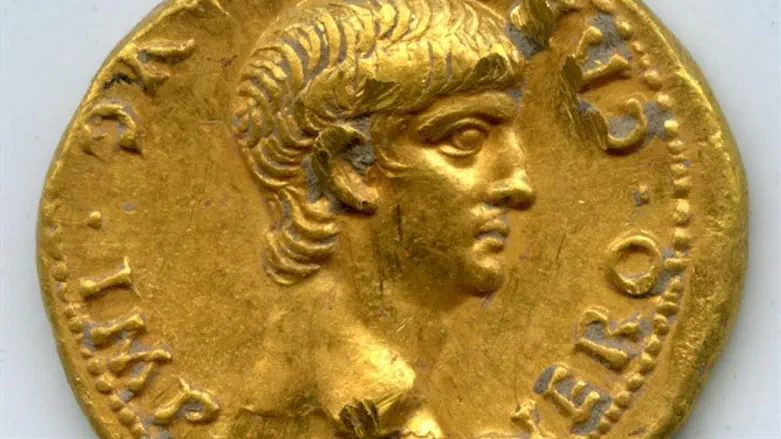
A gold coin with a profile of the Roman Emperor Nero has been discovered near Mount Zion in Jerusalem. The coin dates to 56 CE, and says, "NERO CAESAR AVC IMP." These coins are extremely rare, and are mostly found in private collections.
Nero's likeness testifies to the Roman presence in this area during that period, 14 years before the destruction of the Second Temple in Jerusalem, in 70 CE.
Nero was born in the year 37 CE, and crowned in the year 64 CE. He was Emperor of the Roman Empire after his father, Claudius, passed away. Nero was the last emperor in the Julio-Claudian dynasty. Known as an immoral and corrupt tyrant, he killed himself in the year 68 CE.
On the back of the coin is an image of an oak wreath, along with the letters "EX S C," and alongside them is a dedication to, "PONTIF MAX TR P III."
Researchers say these notes mean the coin was minted in the year 56 - just more than ten years before the Romans destroyed the Second Temple.
The ancient coin was found buried in gravel, near some ruined Jewish homes from the first century. According to scientists, these homes probably belonged to rich priestly families.
According to Dr. Gibson, this discovery included "rooms that were well-kept, on a large property, as well as a bath and a mikve, whose ceilings have remained intact."
The coin was discovered by archaeologists from the University of North Carolina, who were working on a dig on Mount Zion in Jerusalem.
This is the first time such a coin has been discovered in Jerusalem.
